Ruins of Krema III
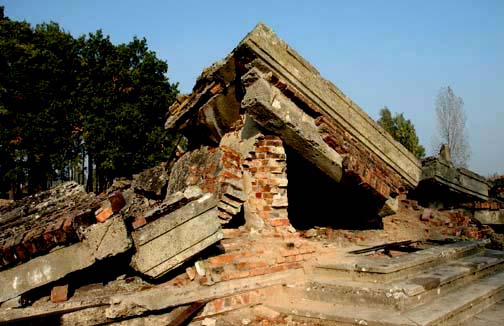
Ruins of the entrance
to Krema III, Oct. 2005
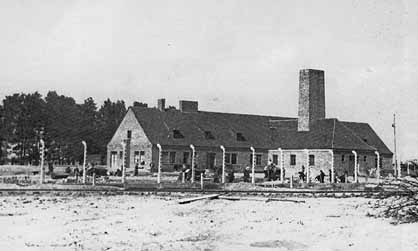 Entrance to Krema III
as it looked in 1943
Entrance to Krema III
as it looked in 1943
The photo at the top of the page shows
the entrance to the ground floor oven room in the Krema III gas
chamber building at Auschwitz Birkenau. The photo immediately
above shows the entrance to Krema III as it looked just after
construction of the building was completed in 1943. Note the
fence which enclosed the area around the building.
The gassing of the Jews stopped at the
end of October 1944 and the cremation ovens were removed in November
1944, but the building was not blown up with dynamite until January
20, 1945, two days after the Germans had abandoned Auschwitz-Birkenau.
The photo below shows the other side
of the entrance to Krema III.
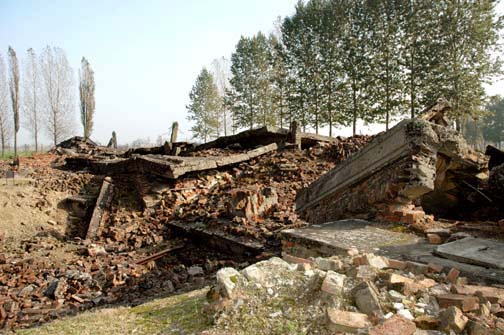
The ruins of Krema
III, one of four gas chamber buildings at Birkenau
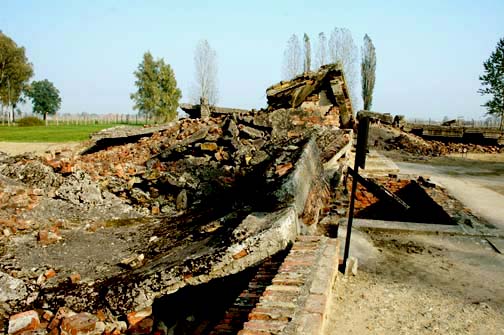
On the right is the
SS entrance to the underground rooms of Krema III
The photo above shows the steps down
into the basement entrance for the SS men, in the center of the
photo on the right-hand side. In the foreground is the ruins
of the roof of the anteroom which the SS men entered. From this
room, there was a door into the vestibule or the Vorraum which
the victims entered from the undressing room and then proceeded
into the gas chamber. A peephole in the door of the gas chamber
allowed the SS men to stand in the Vorraum and watch the victims
die.
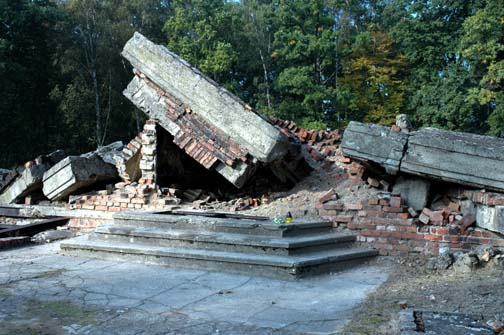
Early morning shot
of the front steps to the building
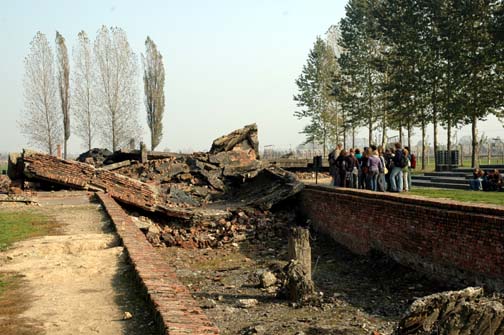
Ruins of the undressing
room in the foreground
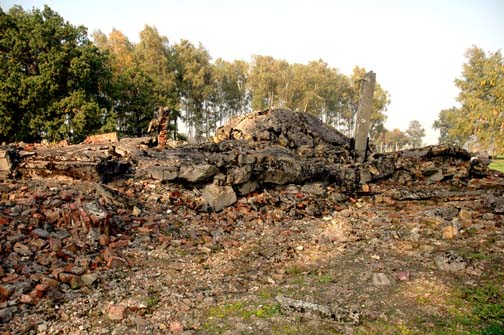
View of the back side
of the Krema III building
The gas chambers at Birkenau were not
a secret; all the prisoners were aware of what was going on.
According to Tadeusz Borowski, a Polish political prisoner at
Birkenau who wrote a book entitled "This Way for the Gas,
Ladies and Gentlemen," a soccer field was built at Birkenau
in the Spring of 1944 "on the broad clearing behind the
hospital barracks." By this time, the railroad tracks had
been extended all the way to the gas chambers at the western
end of the camp, and the men playing soccer were able to see
the victims arrive on the trains and then walk to their death
in Krema III, which was "right by the fence" that separated
the gas chambers from the barracks in the camp. Borowski wrote
that he was the goalkeeper in a game on a beautiful Sunday afternoon
and "Between two throw-ins in a soccer game, right behind
my back, three thousand people had been put to death."
Three thousand was the number of Jews
that typically arrived on each transport; during the extermination
of the Hungarian Jews in 1944, an entire transport would be gassed
without going through a selection process, in spite of the fact
that the Nazis were desperate for workers in their munitions
factories.
This page was last updated on December
14, 2008
|